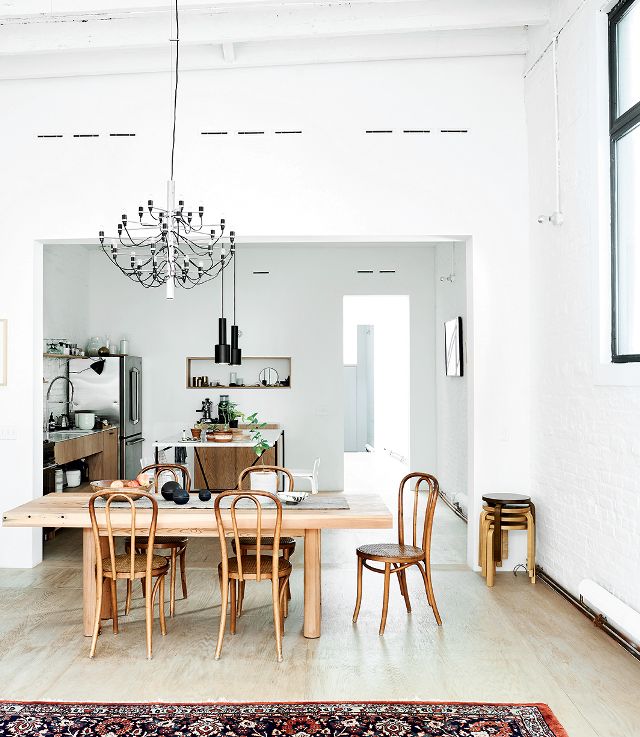How to Pull Off the Hip Industrial Look
Blog:How to Pull Off the Hip Industrial Look

Posted on
From: MyDomaine
Just hearing the words "warehouse conversion" or "hip loft" can make our design hearts skip a beat. That might sound a tad dramatic at first, but you only have to peek inside one of these factory flips to see why. The curated yet raw aesthetic dances creatively between the minimal and the eclectic, striking a stylish balance we all want to bring home. While we love a sweet feminine vibe or that sleek minimal look, there's something about the industrial aesthetic that reels us in every time. It's also why Sara Emslie dedicated an entire book, Urban Pioneer, to this time-worn and much-loved trend.
"Urban pioneering first began back in the 1950s and 60s when a decline in manufacturing led to so many factories, mills, warehouses, and other inner city industrial buildings becoming vacant and attracting all sorts of artists and creative types seeking cheap rents," she told MyDomaine. "As the populations of our towns and cities continue to soar, there seems to be a second wave of urban-pioneering types seeking to convert these types of buildings into homes with a distinct aesthetic." And Emslie tells us this design trend shows no sign of abating, with everything from furniture and accessories to kitchen and lighting design undergoing an industrial-inspired rethink.
"It is such a great look, and no matter whether you live, in a former factory or warehouse or a new build, a touch of industrial chic can add bags of style in an instant," she explains. "For me, as a stylist, I realized that there was more to the look than just the classic warehouse one of bare brick, concrete, and metal. Urban pioneering isn't just about the buildings. It is as much about the individual spirit and personality of the homeowners." If you're in love with this look too, then read ahead for Emslie's advice, inspiration, and style tips à la industrial to create the insanely cool look for yourself, no matter where you live.
MYDOMAINE: What are the distinctive characteristics that define an industrial space?
SARA EMSLIE: Size is the most distinctive. These spaces were built to be functional workplaces, often manufacturing large-scale industrial pieces, so their interiors are vast. Even ex-industrial spaces, such as former shops or garages, usually consist of interior layouts that are very different in scale and proportion to a standard residential space. Also, materials used in their construction—rough textures such as brick, concrete, metal, and wood—are usually in abundance and if retained and restored can add tons of charm and authenticity.
MD: For those of us who love the industrial look but don't live in an old factory or loft warehouse space, how can we re-create it at home?
SE: Here are a few simple updates:
- Embrace imperfections.
Exposing brickwork, for example, can add an element of warehouse style. Old brick, in particular, will be full of imperfections and knocked around a bit—retain this and add character in the process.
- Restore original features.
Reclaimed timber flooring is great for adding some industrial style, and if it has a rough patina that shows signs of age, hang on to it and enjoy its time-worn scuffs and marks.
- Add a dash of utility chic.
Source items that are full of classic utilitarian charm and that were functional items designed with a practical and hard-working aesthetic. Factory pendant task lights, pendant shades, and old-fashioned Bakelite switches are all enjoying a renaissance and look great in a modern home. So, too, are canteen favorites such as Duralex glass tumblers, stainless steel cookware, and practical glass storage jars, which were all built to last and can add some utility chic to a modern kitchen.
- Be inventive.
Take inspiration from the robust structures of warehouses, such as metal joists, solid timber, and even scaffolding poles, and source furniture items such as tables, benches, and shelving units that have been engineered with as much precision and force as an iron girder. Large-scale pieces will make a visual industrial statement and add drama to any room.
Read more here.